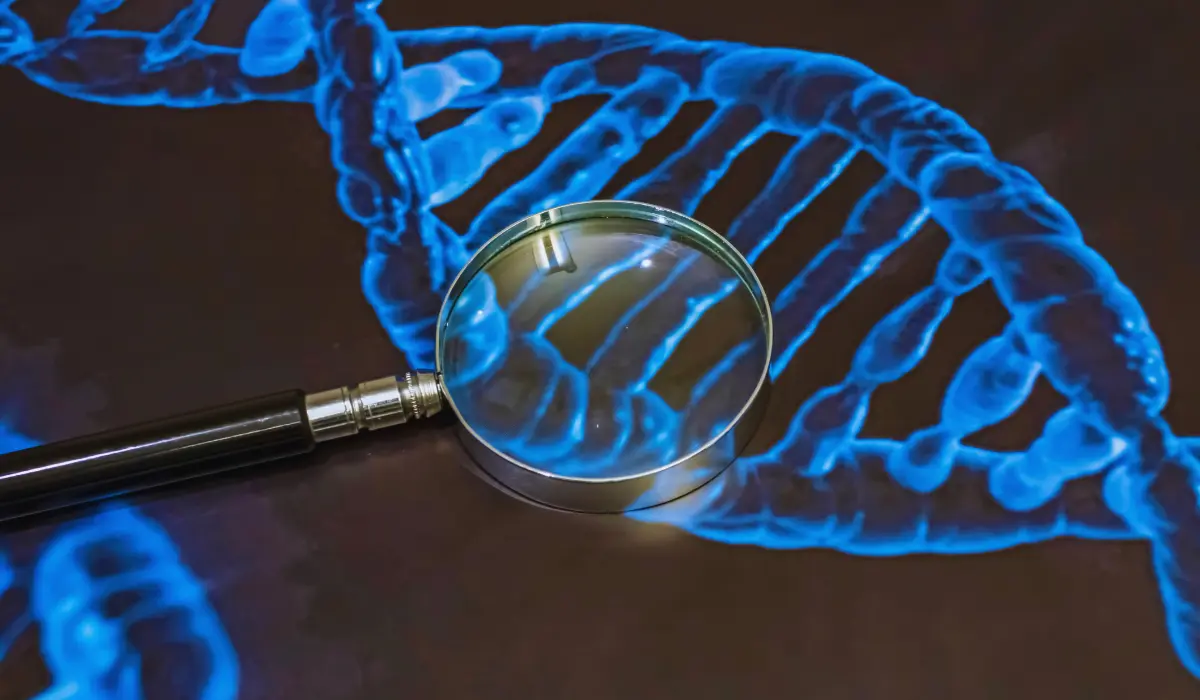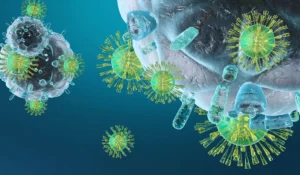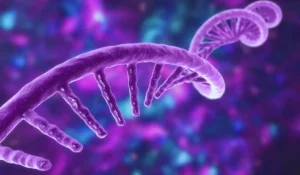What is Alport Syndrome?
Alport syndrome is a rare genetic disorder caused by mutations in the gene encoding for type IV collagen. But, before going too deep into alport syndrome, let’s understand what are collagens, especially Type IV collagens.
Collagen belongs to a family of structural proteins. It is considered as the most abundant protein in our body. It is present all through connective tissues.
Each collagen type is designated with a Roman letter. Mutations in these proteins or absence of these proteins leads to issues in those tissues where this collagen is present.
As we mentioned earlier, Alport syndrome occurs when there is mutation in type IV collagen. Collagen IV is essential for kidney’s glomerulus, cochlea and the eyes which is why symptoms of Alport syndrome are characteristic to those tissues.
Collagen Type IV
Type IV collagen is a sheet-like structure present in all the basement membranes of our body. They support cells and form a barrier. The basement membrane has 3 layers namely lamina lucida, lamina densa and lamina reticularis. It is in lamina densa that the type IV collagen is present.
Collagen Type IV is a heterotrimer. It means it is composed of 3 different subunits of polypeptides composed of alpha chains that are fitted together in a triple helix. Each alpha chain has a really lengthy recurrent sequence of amino acids i.e. repetitions of “A glycine followed by 2 variable amino acids.”
Glycine, as we know, is the smallest amino acid and it permits to be fitted tightly into the collagen’s triple helix. Now if a mutation happens and a much larger amino acid is put in place of glycine, then the helix couldn’t be packed tightly, thus resulting in its degradation.
When making collagen type IV heterotrimer, there are 6 similar alpha chains which can be chosen. These chains are encoded by 6 genes having names that begin with COL4 (indicating collagen IV), followed by an A (as they code for alpha chains) and lastly a number ranging from 1-6 (that designates which alpha chain type).
One form of type IV collagen is formed by combining two alpha-1’s with an alpha-2; another is formed by combining the alpha-3, alpha-4, and alpha-5 chains; the third type has two alpha-5’s and an alpha-6.
The alpha-1/alpha-1/alpha-2 version is found in the basement membrane at birth. However, during infancy, it is replaced by alpha-3/alpha-4/alpha-5 collagen IV, especially in the kidney’s glomerulus, eyes and the cochlea.
What Causes Alport syndrome?
When mutation occurs in either COL4A3, COL4A4 or COL4A5 genes, the alpha-3/alpha-4/alpha-5 heterotrimer gets affected resulting in Alport syndrome.
Next about the inheritance patterns of Alport syndrome
COL4A5 is found on the X chromosome. Therefore, mutations in this result in X-linked Alport syndrome which is an early onset and most common type of Alport syndrome.
COL4A3 and 4 are present on autosomes/non-sex chromosomes. Therefore, mutations in these results in either autosomal recessive Alport syndrome or autosomal dominant Alport syndrome. The recessive one is an early onset while the dominant one is a late onset disease.
What are the symptoms of Alport syndrome?
Now, let’s talk about how mutation in type IV collagen affects various tissues and produce symptoms characteristic to alport syndrome.
Since we know that collagen IV is essential for kidney’s glomerulus, cochlea and the eyes which is why symptoms of Alport syndrome are characteristic to those tissues.
First kidney’s glomeruli
Glomeruli present within the kidneys filter the blood. This glomeruli together with a tubule is called a nephron. Coming back to Glomeruli, they have basement membranes referred to as the Glomerular Basement membrane or GBM.
This GBM, along with fenestrated or porous capillary endothelium, podocyte’s slit diaphragm together acts as a selective filter where in water and few other plasma elements clear out the capillary to form filtrate which then becomes urine. However, RBCs and plasma proteins remain in the glomerular capillary and don’t usually become the part of urine.
What happens in Alport syndrome is kidney functions normally throughout early childhood, but after a while nonfunctional or absence of type IV collagen makes the glomerular basement membrane thin and excessively porous allowing red blood cells to go through the capillary resulting in microscopic hematuria i.e. presence of red blood cells in the urine visualized under a microscope.
This, in due course, leads to gross hematuria i.e. RBCs present in urine which can be seen with a naked eye. Later, after a period of time, abnormal levels of plasma protein begin to pass through the filter resulting in proteinuria which means presence of protein in urine.
This uncontrolled loss of protein and other factors makes the glomerular basement membrane go through sclerosis. Hence, glomeruli becomes unhealthy and results in renal insufficiency, even renal failure which can lead to renovascular hypertension too. Together the hematuria, renal insufficiency, and hypertension contribute to the categorization of Alport syndrome as a glomerulonephritis.
However, there is yet another cause of glomerulonephritis referred to as Goodpasture syndrome which is caused as a result of autoantibodies production against the basement membrane of glomeruli and alveoli.
It means both the syndromes’ outcome is similar, but their abnormality in the basement membrane is caused due to a dissimilar cause.
Next comes the ear
As we know the other body part which is affected in Alport syndrome is the ear which results in loss of hearing. However, this will not be seen at birth. It usually occurs in childhood or adolescence.
The precise mechanism behind this is not clearly known, but a proposed mechanism concerns the inner ear structure or the cochlea which has the organ of corti having very small and highly specialized sets of hair cells attached to a basement membrane.
These hair cells produce nerve signals or impulses in response to sound vibrations normally. Therefore, people with Alport syndrome having abnormal collagen type IV can put a stop to the hair cells from generating these signals.
Here, hearing loss is an issue caused by problems in the cochlea or the inner ear, so it is a sensorineural type of hearing loss. It would have been a conductive hearing loss if the problem was in the middle or/and outer ear.
Now, in the eye:
Just like the ear, it does not appear at birth. The result is Anterior lenticonus, which is a condition in which the middle part of the lens begins to push into the anterior chamber because the anterior lens capsule no longer has the capacity to preserve the lens shape.
Other symptoms are myopia or nearsightedness, and lens opacity, occurrence of white or yellow flecks around the central part of the retina called macula, and issues with the cornea like repetitive erosions.
How is Alport syndrome diagnosed?
It is suspected when signs like microscopic or gross hematuria, vision or hearing issues appear with no evident cause. Another clue is family history, but in case of recessive Alport syndrome or new spontaneous mutations, this clue maynot be present.
A kidney or skin biopsy is done to confirm the diagnosis. In this process, a biopsy sample is examined by immunohistochemistry i.e. a labeled antibody is put on to the biopsy sample on a slide and because the misfolded collagen degrades or tend to degrade, lack of staining in collagen alpha chain is a predicted to be Alport syndrome.
Skin biopsy is simpler to do, but skin can be used only to detect alpha-5 chain mutations as it contains alpha-5/alpha-5/alpha-6 form of collagen type IV, but does not contain alpha-3 or 4 chains
In other cases, biopsy can be visualized under an electron microscope which shows glomerular basement membrane thinning if the disease is detected early. However, if the disease is detected late, it would present both GBM thickening and GBM thinning, a splitted lamina densa, and collagen strands which look similar to a woven basket.
Also, few patients may do gene testing for COL4A genes.
What is the treatment for Alport syndrome?
Therapy is based on the symptoms. Angiotensin converting enzyme inhibitors and/or angiotensin receptor blockers are given for proteinuria as there is evidence that it prevents kidney failure to progress.
In Anterior lenticonus. Replacement lenses can be used whereas dialysis or even kidney transplant is necessary for kidney failure conditions.
Quick summary
Alport syndrome occurs due to mutations in COL4A3,4 and 5 genes that encode for collagen type IV alpha subunits 3, 4 and 5 causing kidney issues like hematuria, glomerulonephritis, inner ear problems like sensorineural hearing loss and eye problems like anterior lenticonus.
Reference
Encyclopedia of Molecular Mechanisms of Disease by Florian Lang
Encyclopedia of Molecular Biology by Thomas E. Creighton
Rare Diseases: Integrative PPPM Approach as the Medicine of the Future from Springer







